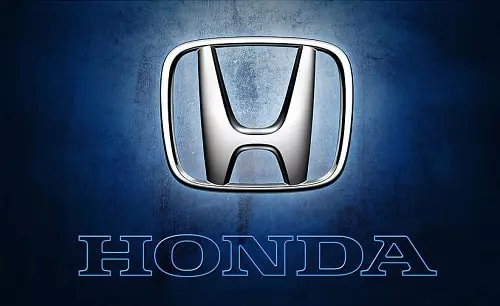Honda, a globally recognized automobile brand, is synonymous with reliability, innovation, and performance. As one of India’s leading two-wheeler and four-wheeler manufacturers, Honda has established a strong foothold in the market, offering products that cater to various segments, including scooters, motorcycles, sedans, and SUVs. For entrepreneurs looking to invest in the automobile retail business, owning a Honda franchise presents a lucrative opportunity.
This article provides a comprehensive analysis of the Honda franchise cost, requirements, and profitability in India, helping you make an informed decision.
Why Invest in a Honda Franchise?

The automobile industry in India is one of the fastest-growing sectors, driven by rising incomes, urbanization, and increasing demand for personal vehicles. Here’s why investing in a Honda dealership is a smart choice:
- Strong Brand Reputation: Honda is a trusted name in India, known for its quality, fuel efficiency, and cutting-edge technology.
- Diverse Product Portfolio: Honda offers a wide range of vehicles, including scooters, motorcycles, and cars, catering to different customer segments.
- Growing Market Demand: With increasing mobility needs and a growing middle class, the demand for two-wheelers and four-wheelers is steadily rising.
- Proven Business Model: Honda’s established franchise model provides franchisees with the tools and support needed to succeed.
- Comprehensive Support: Honda offers extensive training, marketing, and operational assistance to its franchise partners.
Honda Franchise Cost in India
Opening a Honda dealership in India involves significant investment due to the scale of operations and the need to meet the brand’s standards. Below is a breakdown of the costs involved:
1. Initial Franchise Fee
The initial franchise fee for a Honda dealership typically ranges between ₹15 lakh and ₹50 lakh, depending on the dealership type (two-wheeler or four-wheeler) and location. This fee grants franchisees the right to operate under the Honda brand and access its product portfolio and support systems.
2. Land and Infrastructure
Setting up a Honda dealership requires a substantial area and high-quality infrastructure to accommodate the showroom, service center, and storage. The costs include:
- Land Requirements:
- Two-Wheeler Dealership: Minimum area of 4,000 to 6,000 square feet.
- Four-Wheeler Dealership: Minimum area of 10,000 to 25,000 square feet.
- The cost of renting or purchasing the land varies depending on the location. Monthly rentals can range from ₹2 lakh to ₹10 lakh, while land purchase costs can go up to ₹1 crore or more in prime locations.
- Showroom Construction and Interiors:
- Two-Wheeler Dealership: ₹50 lakh to ₹1 crore.
- Four-Wheeler Dealership: ₹2 crore to ₹5 crore.
- These costs cover showroom interiors, customer lounges, office space, and branding.
- Service Center Setup:
- Two-Wheeler Dealership: ₹30 lakh to ₹50 lakh.
- Four-Wheeler Dealership: ₹1 crore to ₹2 crore.
- This includes the cost of tools, equipment, and service bays.
3. Inventory and Vehicle Stock
Franchisees must invest in an initial stock of vehicles to display and sell. The inventory cost varies depending on the dealership type:
- Two-Wheeler Dealership: ₹50 lakh to ₹1 crore.
- Four-Wheeler Dealership: ₹2 crore to ₹5 crore.
4. Licensing and Permits
Franchisees need to acquire various licenses and permits, including GST registration, trade licenses, and pollution control clearances. The cost of obtaining these permits typically ranges from ₹2 lakh to ₹5 lakh.
5. Marketing and Advertising Contribution
Honda requires franchisees to contribute a percentage of their revenue, usually 2% to 4%, toward local and national marketing campaigns.
6. Working Capital
A working capital reserve of ₹50 lakh to ₹1 crore is recommended to cover operational expenses such as staff salaries, utilities, and maintenance.
Total Investment
Considering all the factors, the total investment required to open a Honda dealership in India typically ranges between:
- Two-Wheeler Dealership: ₹1.5 crore to ₹3 crore.
- Four-Wheeler Dealership: ₹4 crore to ₹8 crore.
Requirements for Opening a Honda Franchise
To qualify as a Honda franchisee, potential investors must meet specific eligibility criteria:
- Financial Capability:
- Franchisees must demonstrate the ability to invest the required capital and sustain operations during the initial phase.
- Prime Location:
- The dealership must be located in a high-traffic area, such as a commercial hub or near residential communities, ensuring visibility and accessibility.
- Retail Space:
- A minimum area of 4,000 square feet for two-wheelers and 10,000 square feet for four-wheelers is required.
- Business Experience:
- While prior experience in the automobile or retail industry is an advantage, it is not mandatory.
- Commitment to Brand Standards:
- Franchisees must adhere to Honda’s operational guidelines, including showroom design, customer service, and inventory management.
Profitability and Return on Investment (ROI)
The profitability of a Honda dealership depends on factors such as location, sales volume, and operational efficiency. Here’s an overview:
- Revenue Potential:
- A well-located Honda dealership can generate annual revenue of ₹10 crore to ₹50 crore, depending on the dealership type and customer base.
- Profit Margins:
- The average profit margin is around 5% to 10% for vehicle sales, while service and spare parts offer higher margins of 15% to 20%.
- Break-Even Period:
- Most Honda dealerships achieve break-even within 2 to 4 years, provided they are efficiently managed.
- Recurring Revenue:
- Service centers and spare parts sales provide a steady source of recurring income.
Advantages of Owning a Honda Franchise
- Trusted Brand: Leverage Honda’s strong reputation and loyal customer base to drive sales.
- Diverse Product Range: Cater to a wide audience with two-wheelers, four-wheelers, and premium vehicles.
- Operational Support: Benefit from Honda’s training programs, marketing assistance, and supply chain management.
- Growing Market Demand: Tap into India’s booming automobile market and the increasing demand for personal vehicles.
Challenges to Consider
- High Initial Investment: The significant upfront cost may be a barrier for small investors.
- Location Dependency: The dealership’s success heavily relies on its location and accessibility.
- Competition: Honda dealerships face competition from other brands like Hero, Maruti Suzuki, and Hyundai.
Conclusion
Investing in a Honda franchise in India is an excellent opportunity for entrepreneurs looking to enter the thriving automobile industry. With its strong brand equity, diverse product offerings, and robust support system, Honda provides a reliable and scalable business model. However, prospective franchisees must carefully evaluate the costs, location, and market conditions before committing to the investment. By adhering to Honda’s operational standards and focusing on customer satisfaction, franchisees can achieve long-term success in this competitive and rewarding industry.
Anantha Nageswaran is the chief editor and writer at TheBusinessBlaze.com. He specialises in business, finance, insurance, loan investment topics. With a strong background in business-finance and a passion for demystifying complex concepts, Anantha brings a unique perspective to his writing.


